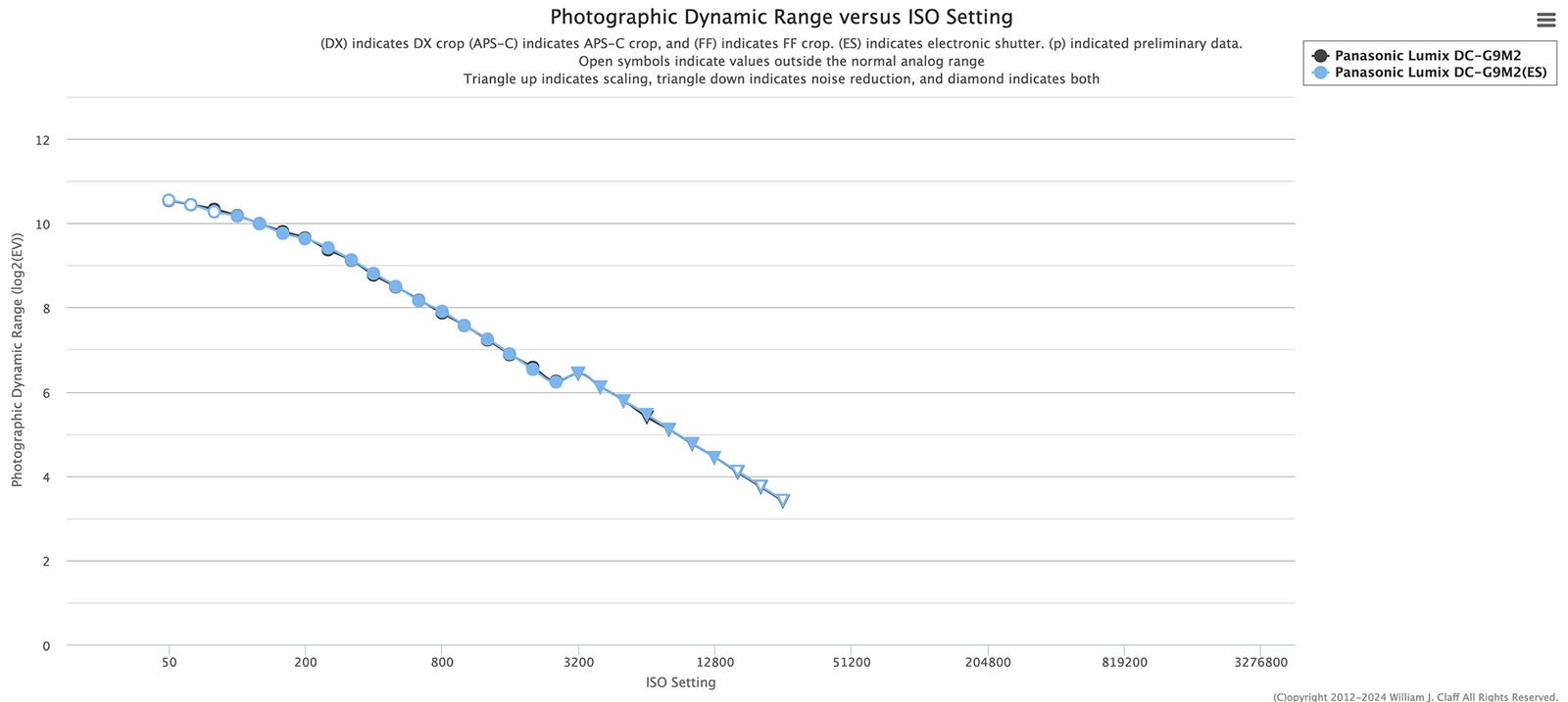How I Fumbled My Report on the G9 II’s Dynamic Range Performance
![]()
Electronic shutters no longer harm peak dynamic range performance in the way they once did, at least not with modern image sensor architecture. It’s time to change course on an earlier story and see where I went wrong.
Back in February, William “Bill” Claff of Photons to Photos published Panasonic Lumix G9 II dynamic range test results to his vast library. The initial tests showed a heavy hit to image quality from using the electronic shutter. I covered that news, discussing other instances where electronic shutters have demonstrably harmed image quality. However, in the case of the G9 II, Claff made an error and re-tested, achieving different results. We didn’t cover this update when it occurred, but as a reader has pointed out, we should have.
Following the G9 II’s initial test results, Panasonic reportedly contacted Claff about an issue with the testing methodology, and Claff accounted for the discrepancy. When the tests were re-run, Claff got different results, showing that using the electronic shutter didn’t come with a dynamic range cost.

Whether there is a dynamic range cost to using an electronic shutter continues to depend on the precise camera model, but whatever cost there has been before — like the over one EV difference between the Canon EOS 1D X Mark III’s mechanical and electronic shutter — has been primarily mitigated with advances in image sensor technology in the mirrorless age.
While some mirrorless cameras still exhibit a difference in peak dynamic range depending on the selected shutter type, the rift has been primarily minimized and, in numerous cases, eliminated. The Lumix G9 II falls into this latter camp. And, of course, some cameras only use electronic shutters and still demonstrate great dynamic range, like the Nikon Z8 and Z9, even if they don’t quite match the peak output of the Z7 II.
Since I wrote the original story in February and am writing this mea culpa now, I wanted to touch on how this mistake happened. Given the conventional wisdom about electronic shutters’ detrimental impact on image quality, and my personal experience, I was happy to accept Claff’s initial findings because they matched up with what I already believed. I am aware of the pitfalls of confirmation bias but fell into the trap.
As such intricacies as dynamic range performance with different shutter types and specific image sensor technologies are rarely (basically never) discussed by camera manufacturers and engineers, despite my efforts to engage with them on such topics, we rely on testing, internal and external alike, when it comes to the nitty-gritty details. When initial results for the G9 II came down the wire, and the purported shortcomings matched my expectations, I picked up the ball and ran with it. That was a mistake I don’t intend to make again.
Thank you to a reader for pointing this issue out. I appreciate the opportunity to learn and improve. Every camera is different, and companies prioritize different features and performance levels when designing their image sensors. Relative advantages and disadvantages shift over time, and it’s important to treat data with a level of curiosity, even when it aligns with preconceived notions and historical trends. Image sensor technology has come a long way, and I must keep up.